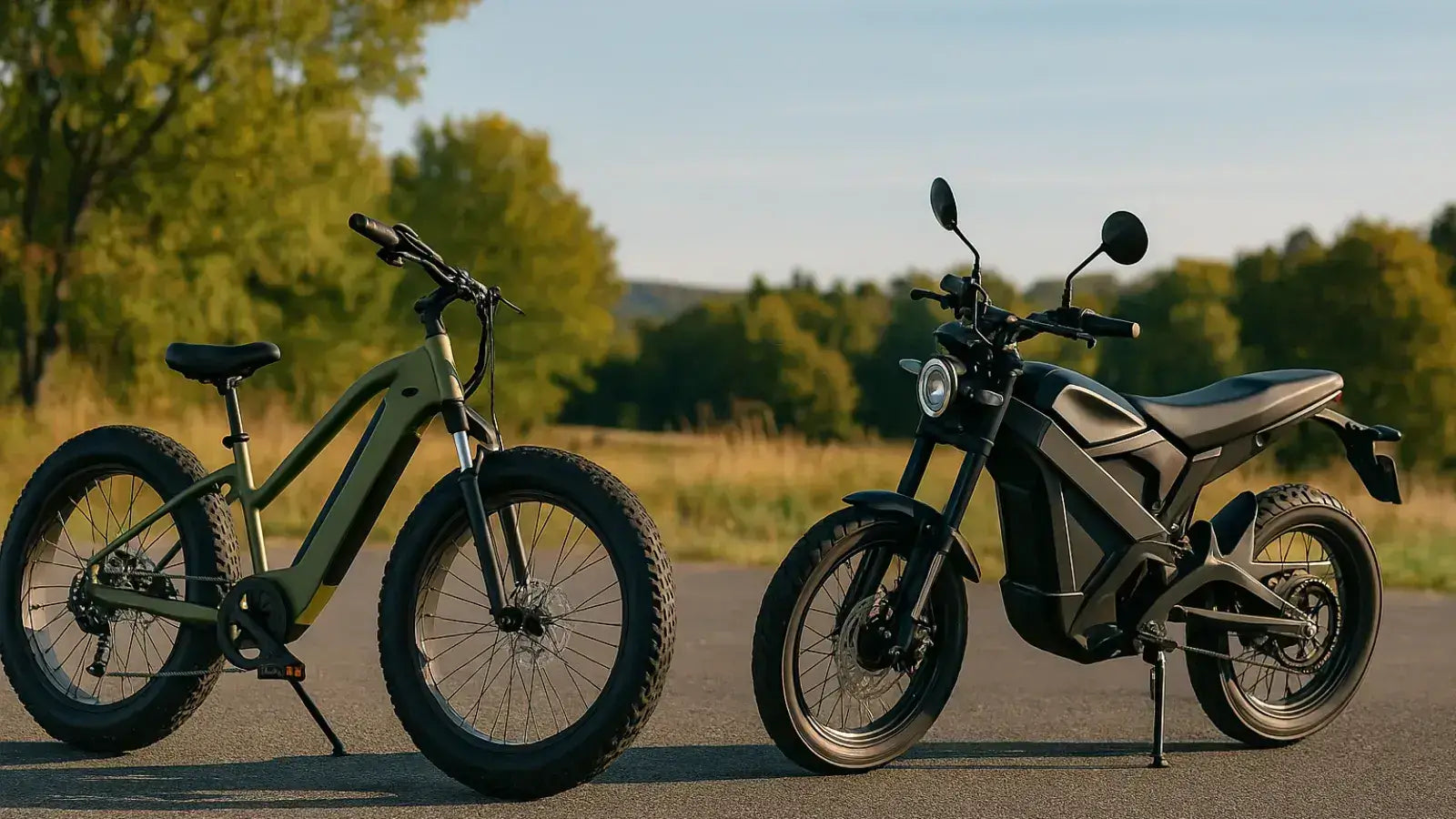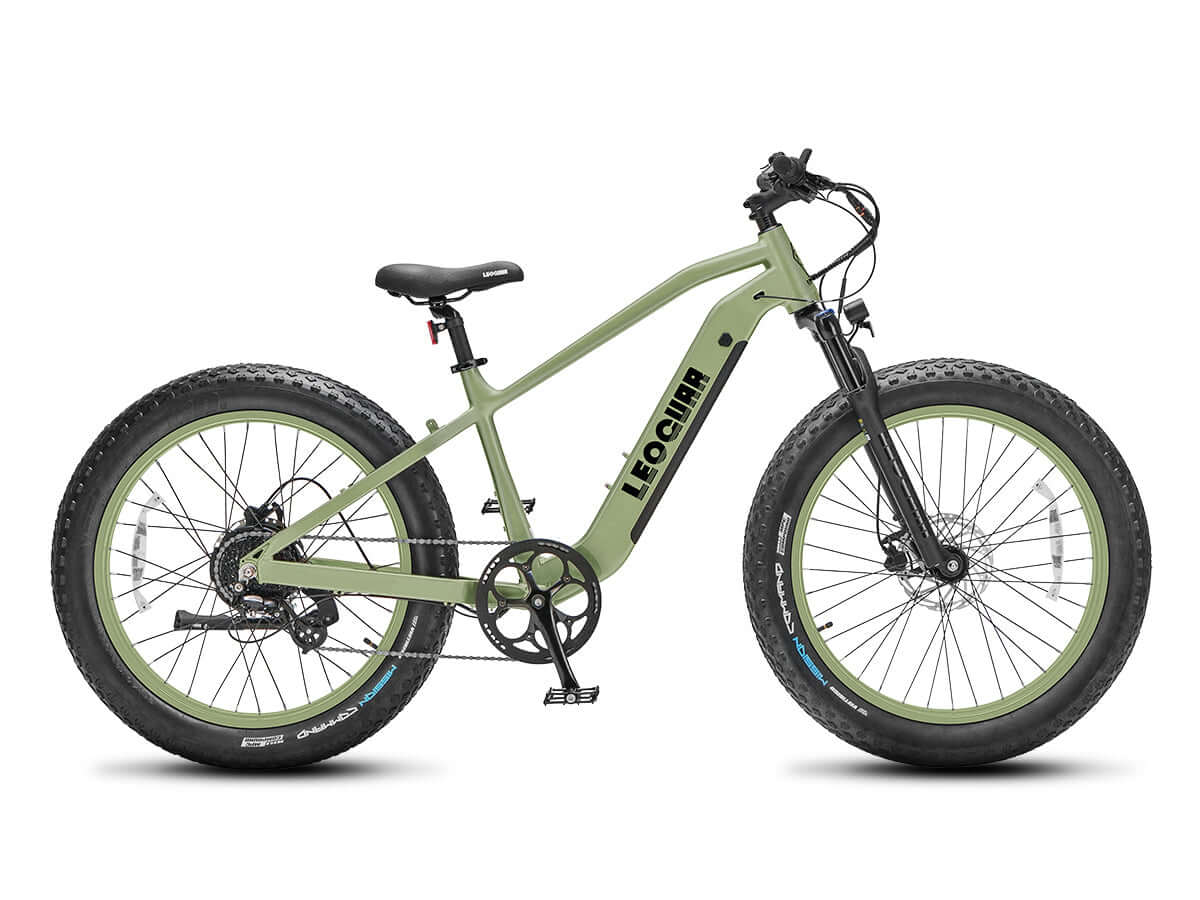
750Wh vs 1500Wh: E-Bike Battery Capacity Guide
When you shop for e-bikes, you see lots of confusing numbers like 750W, 750Wh, and 1500Wh. These specs might seem hard to understand, but they help you pick the right bike for your needs. This guide will explain the differences so you can make a smart choice.
The main thing to know is the difference between power and capacity. Think of it like a car where Watts (W) are like horsepower - they show how fast you can go and how well you climb hills. Watt-hours (Wh) are like your gas tank size, showing how far you can ride on one charge.
This article will explain the real differences between a 750Wh battery and a 1500Wh battery when used with a popular 750w electric bicycle. You'll know which battery size works best for you by the end.
Watts vs. Watt-Hours
You need to understand these two key terms to make the right choice. They sound alike but control different parts of your riding experience.

Watts (W) is Power
Watts show how much energy your motor uses at any moment. This measures the instant power output from the motor.
Here's a simple way to think about it: if your battery is a water bottle, the motor's Watts (W) rating is like the width of your drinking straw. A 750W motor is like a very wide straw that lets you drink lots of "water" (energy) quickly for strong acceleration or climbing steep hills. But drinking fast will empty your bottle much quicker, and a 750w electric bicycle can pull up to 750 watts from the battery when you need the most power.
Watt-hours (Wh) is Capacity
Watt-hours (Wh) show the total energy stored in your battery. This is the best way to measure how far your e-bike can go.
Using our water bottle example, the Watt-hours (Wh) rating is the total size of your bottle. A 750Wh battery is like a 750ml bottle, while a 1500Wh battery is much bigger at 1500ml. The bigger bottle lets you ride longer before you need to "refill" (recharge). This energy sits in a pack of lithium-ion cells, and the chemical compositions of these batteries can affect things like weight and how well they work in different temperatures, but Wh is still the main measure of total energy storage.
750Wh vs. 1500Wh Compared
On paper, a 1500Wh battery gives you twice the capacity of a 750Wh battery. But picking the right one isn't as simple as "bigger is always better" because more capacity means trade-offs in weight, cost, and how the bike handles. The best choice depends on how you ride and what matters most to you.
Here's a clear comparison of the key differences:
| Feature | 750Wh Battery | 1500Wh Battery (often Dual 750Wh) |
|---|---|---|
| Estimated Range | 30-60 miles (48-96 km) | 60-120 miles (96-193 km) |
| Ideal Use Case | Daily commuting, weekend leisure rides | Long-distance touring, delivery, eliminating range anxiety |
| Average Weight | 8-10 lbs (3.6-4.5 kg) | 16-20 lbs (7.2-9 kg) or more |
| Typical Charge Time | 4-6 hours | 8-12 hours (or 4-6 hours per battery if dual) |
| Cost Impact | Standard, more affordable | Premium, significantly higher cost |
| Bike Handling | More nimble and balanced | Heavier, can feel less agile |
Remember that the advertised Watt-hours show the total theoretical capacity. Real-world usable capacity is often slightly lower due to battery management system (BMS) limits and cell wear over time. Professional reviewers think about this during extensive testing of battery capacities, where they measure the actual energy output from full charge to empty.
Motor's Impact on Range
Many people think a 750W motor always uses 750 watts of power, but this isn't true. 750W is the motor's top power rating, which it only uses in the most demanding situations like steep climbs. How you ride directly controls how much power the motor takes from your 750Wh or 1500Wh battery, which affects your range.
Here's how different riding styles impact your battery:
- Low Power Draw: Cruising on flat roads using low pedal-assist (PAS 1 or 2) where the motor gives gentle help and sips energy slowly.
- Medium Power Draw: Normal acceleration from stops, riding against light wind, or using mid-range PAS levels.
- High Power Draw: Using throttle only, hard acceleration, or climbing steep hills where the motor approaches its 750W peak and drains the battery fastest.
Here's the key point: a powerful 750w electric bicycle can drain a 750Wh battery very quickly if you ride hard. If you ran a 750W motor at full 750-watt output non-stop, it would empty a 750Wh battery in exactly one hour (750Wh ÷ 750W = 1h). This is why expert e-bike reviews often include tough hill-climb tests that push the motor and battery to their limits.
Beyond the Spec Sheet
Manufacturers' range estimates are best-case numbers based on a light rider on flat ground with no wind using the lowest assist setting. In real life, your actual range will almost certainly be different. From our experience working with e-bikes, several factors greatly impact how far a 750Wh or 1500Wh battery will actually take you.
Here are the most important factors based on real-world testing:
- Pedal Assist Level (PAS): This is the biggest factor you control, and dropping from the highest setting (PAS 5) to a moderate one (PAS 2 or 3) can often double your range. Save the highest settings for when you really need them for hills or quick speed bursts.
- Terrain: Hills drain batteries fast, and riding in hilly areas will cut your range by 40-50% compared to flat roads.
- Rider and Cargo Weight: Moving more weight takes more energy, so a 220 lb rider with a 20 lb backpack will get less range than a 150 lb rider with no cargo.
- Tire Pressure: Low tire pressure creates drag that can hurt efficiency by 15% or more, especially with wide fat tires.
- Wind and Temperature: Headwinds make the motor work harder, and cold weather below 40°F reduces battery capacity temporarily.
Pro Tip: Maximize Range
Get the most from every charge by following this checklist: start in low gear to reduce motor strain, use pedal-assist smartly instead of always using the highest setting, keep proper tire pressure, and remove unnecessary weight from your bike. This is why cycling publications do extensive real-world testing by cycling experts because lab conditions don't tell the whole story of e-bike performance.
The Dual-Battery Option
When you see a 750w electric bicycle advertised with huge 1500Wh capacity, it almost always uses a dual-battery system. This setup mounts two separate 750Wh batteries to the bike frame that work together to provide the combined capacity. This solution targets riders with very high range needs.
Why Go Dual-Battery?
The main reason for a 1500Wh setup is to completely eliminate "range anxiety" for riders who need maximum distance. The riders who benefit most include long-distance commuters with round trips over 40-50 miles who don't want to charge at work, e-bike tourists on multi-day trips or century rides (100 miles), and commercial users like delivery riders who are on their bikes 8+ hours daily.
Another key advantage is flexibility since you can remove one battery for shorter trips. This makes the bike lighter and easier to handle while still giving you a solid 750Wh of capacity.
Points to Consider
While the range is impressive, a dual-battery system has specific trade-offs. The pros include massive range potential (100+ miles), ultimate peace of mind against running out of power, and flexibility to run a lighter single-battery setup for shorter trips. The cons include significant weight increase that makes the bike feel less nimble and harder to lift, much higher purchase price, and increased complexity since you now have two batteries to manage and charge.
Which is Right for You?
Choosing between a 750Wh and 1500Wh battery system comes down to honestly assessing your needs. There's no single "best" option, only the best option for your specific use. Choose a 750Wh battery if you're a typical daily commuter, weekend leisure rider, or someone whose average trips are under 40 miles. This capacity gives an excellent balance of range, manageable weight, and affordability and is more than enough for most riders.
Choose a 1500Wh battery system if you're a long-distance tourer, delivery professional, or rider who absolutely must eliminate range anxiety for very long rides. If your main goal is to maximize mileage and you're willing to accept the added weight and cost, the dual-battery solution offers unmatched endurance. Think of your battery as the gas tank for your journey. A 750w electric bicycle provides the engine, and your job is to choose a tank size that lets you comfortably and confidently reach all your destinations.
FAQ
Q: How long does it take to charge a 750Wh vs 1500Wh battery?
A: A 750Wh battery typically takes 4-6 hours to fully charge, while a 1500Wh dual-battery system takes 8-12 hours total. If the dual system allows charging both batteries separately, you can charge each 750Wh battery in 4-6 hours.
Q: Can I upgrade from a 750Wh to a 1500Wh battery later?
A: This depends on your specific e-bike model. Most 1500Wh systems use dual 750Wh batteries, so if your bike has mounting points for a second battery, upgrading might be possible. Check with your manufacturer about compatibility.
Q: How much does the extra weight of a 1500Wh system affect riding?
A: A 1500Wh dual-battery system adds about 8-10 lbs compared to a single 750Wh battery. This extra weight makes the bike feel less nimble, especially when maneuvering at low speeds or lifting the bike, but has minimal impact on riding performance once you're moving.
Q: Will a 750W motor damage a 750Wh battery by drawing too much power?
A: No, the battery management system (BMS) protects the battery from damage. While a 750W motor can drain a 750Wh battery quickly under heavy use, it won't cause damage. The motor only draws maximum power when needed for acceleration or climbing hills.
Q: How do I know if I need the extra range of a 1500Wh battery?
A: If your typical rides are under 30 miles or you can easily charge during the day, a 750Wh battery is usually sufficient. Choose 1500Wh if you regularly ride 50+ miles without charging opportunities, do delivery work, or want maximum peace of mind for long adventures.









































Leave a comment